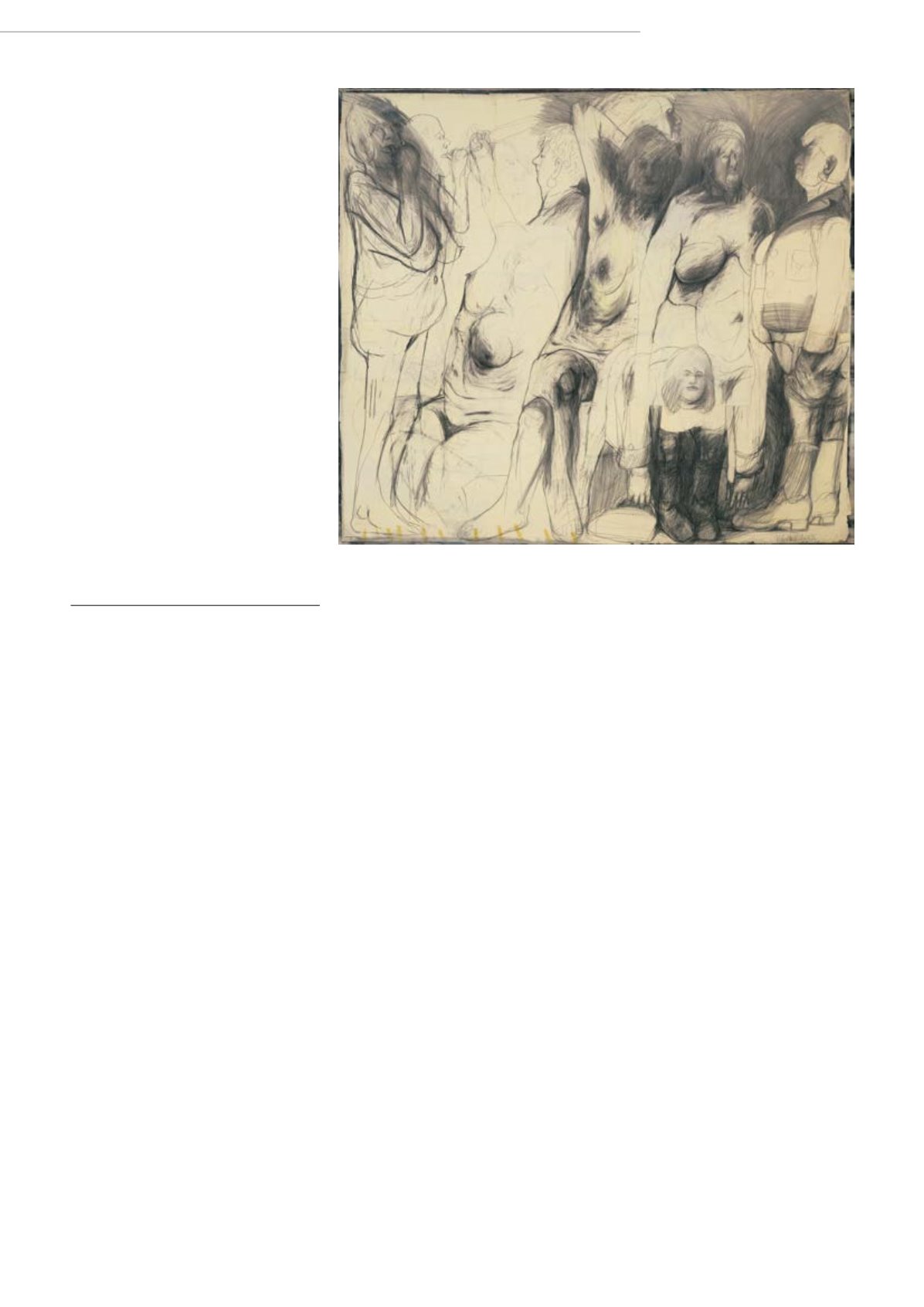

| 66
PostWar & Contemporary
3462
ALFRED HRDLICKA(1928 Vienna 2009)
Werkskizze zu „Tausendundeinenacht“.
1967.
Pencil and charcol on paper on canvas.
Signed and dated lower right: Alfred
Hrdlicka 1967.
193 x 220 cm.
Provenance:
- Former collection Prof. Dr. Gustav Stein,
Cologne.
- Private collection Switzerland.
Exhibition: Biennale Sao Paulo 1967 (with
the label on the reverse).
Literature: Chobot, Manfred. Alfred Hrdlic-
ka. Skulptur und grosse Zeichnungen,
Vienna/Munich 1973, no. 17 (with ill.).
The Austrian artist Alfred Hrdlicka was
born in 1928 in Vienna. His father, like
Hrdlicka himself, was a committed
communist, who in the 1930s fell foul
of the ruling National Socialists and was
frequently arrested. Towards the end of
the Second World War he and his son
joined the Underground movement, also
in order to protect his son from having to
do military service. Already during the war
Hrdlicka began to experiment with art, and
began studying painting at the Akademie
der Bildenden Künste in Vienna in 1946.
After successfully completing his studies,
in 1953 he attended sculpture classes with
Fritz Wotruba. His international break-
through came in 1964 when he participa-
ted in the 32nd Venice Biennale, repre-
senting Austria. Numerous exhibitions and
public sculpture commissions followed,
the latter in most cases provoking public
outrage. From the 1970s, Hrdlicka held
professorships at various institutions,
including the Staatliche Akademie der
Bildenden Künste in Stuttgart, the Hoch-
schule für bildende Künste in Hamburg,
the Universität der Künste in Berlin and the
Universität für angewandte Kunst in Vien-
na. He consequently influenced an entire
generation of artists.
After the experiences and horrors of the
Second World War and the Third Reich,
most European artists turned to abstrac-
tion, since for themwhat had been expe-
rienced rendered the figural in art almost
impossible. The committed communist
Hrdlicka reacted quite differently, howe-
ver: the human figure is still central to his
oeuvre, so he turned to the Expressionist
art of the pre-war period.
Moreover, for him art was always political;
in his eyes the artist should depict, analyse
and criticise the social condition in his
works. This does not fit with the medium
of abstraction. Even if for Hrdlicka art was
always political, abstraction is in a certain
sense a commentary without taking a
stand, something which he repudiated
throughout his life. We can see the many
scandals surrounding his public monu-
ments in relation to this position: Hrdlicka
had a clear political opinion and perception
of history, which he represented in his
works without heeding social sensibilities.
The present large format drawing from
1967 is one of a series of drawings com-
parable in terms of technique and size,
which appear time and again in his oeuvre.
Barely recognisable, sketched forms
stand in contrast to the clearly delineated
figures rendered with powerful contours.
Only three figures have their faces turned
outwards to the viewer; the remaining
figures are all in profile. The title specifies
the theme of the work, but without giving
the viewer any clues as to what extent the
piece is about “1001 Nights”, of which we
indeed have a clear idea.
The artist plays effectively with our expec-
tations, using contrasts of light and dark as
well as powerful and fleeting contours; and
through technique and scale he succeeds
in lending the drawing a strong pictorial
quality.
CHF 30 000 / 40 000
(€ 27 780 / 37 040)


















